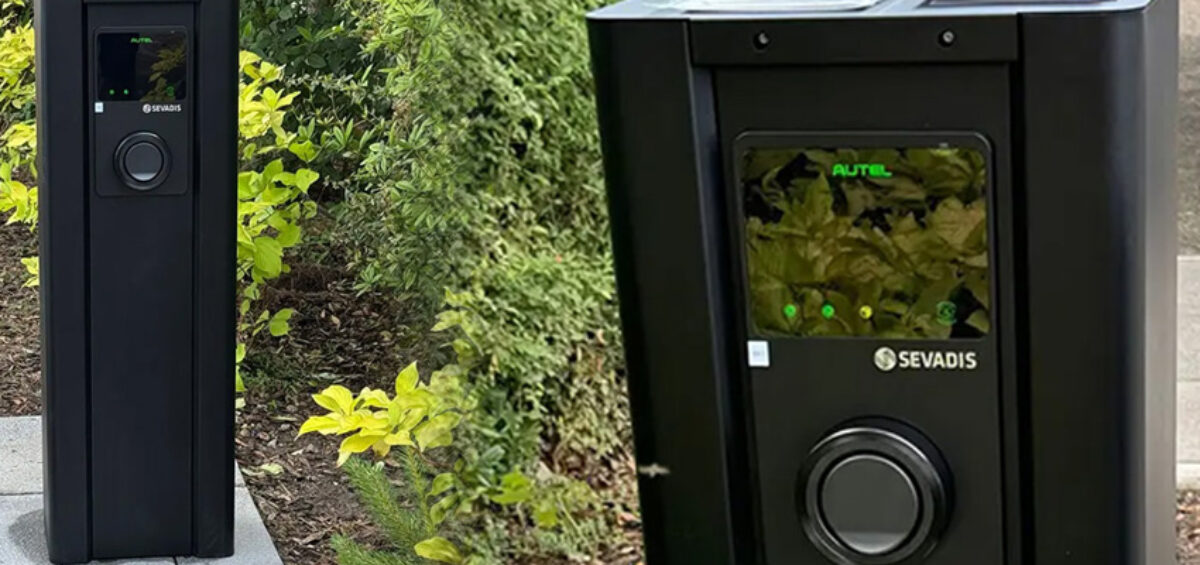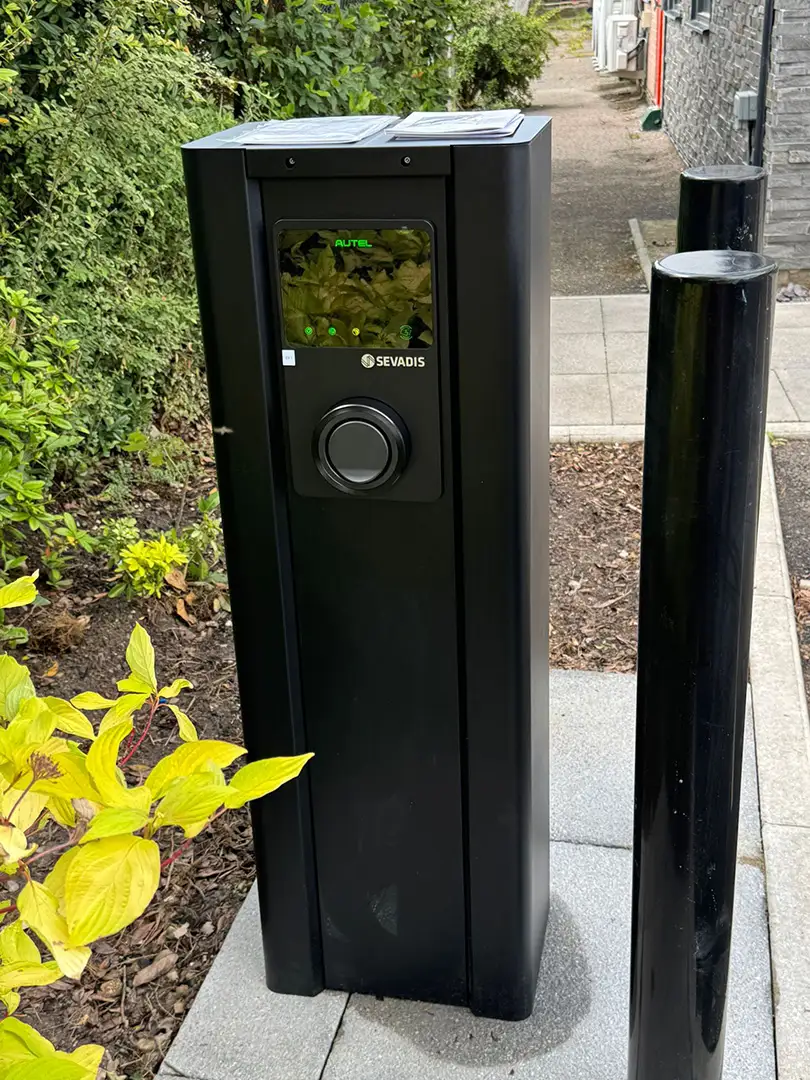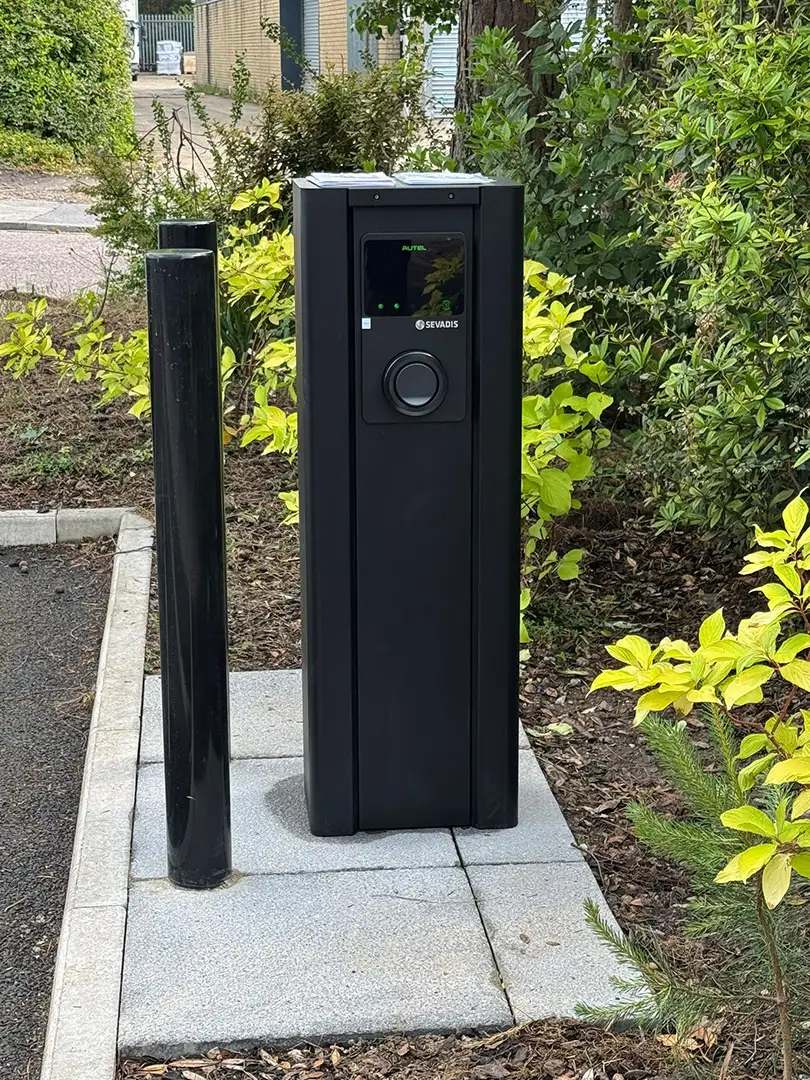Do you know that by 2030, the UK government will ban the sale of new petrol and diesel cars? That’s not a prediction, it’s policy.
With more than one in five new cars sold in the UK in 2024 being electric, the shift to electric vehicles (EVs) is happening faster than many businesses had anticipated.
However, for commercial property owners, this raises a critical question:
Is your building ready to support the charging needs of your workforce, tenants, and fleets?
If not, now is the time to act.
In this article, we’ll walk you through the complete installation process and share a real case study that shows how it’s done right.
Step-by-Step Guide to Installing Commercial EV Chargers in the UK
Installing electric vehicle chargers for a commercial property isn’t a one-size-fits-all task. It involves technical planning, electrical expertise, and regulatory compliance.
Here’s a detailed breakdown of how a typical commercial EV charger installation works, especially when handled by a certified installer like JME Energy:
1. Conduct a Thorough Site Survey
Every successful EV project starts with understanding the environment. At first, a survey is conducted to evaluate the property’s existing electrical infrastructure and parking layout. The installation company also assesses the building’s load capacity and potential for future scalability. The charger must be accessible and safe to install as well.
If you’re thinking of installing EV chargers, assess the feasibility of grant funding, such as the Workplace Charging Scheme (WCS). This UK government initiative offers up to £350 per socket for up to 40 sockets per company.
This first step helps determine what is possible, what is optimal, and what permits (if any) are required.
2. Plan Electrical Load and Capacity
EV chargers, especially the commercial-grade 22kW or rapid chargers, require a significant power supply. Before installation, it’s essential to ensure the building has sufficient load capacity to handle the charging needs.
For this step:
- Measure current electrical usage during peak hours.
- Check the building’s maximum load capacity.
- Identify potential risks of overloading circuits.
- Decide whether load balancing or an upgrade is necessary.
Load balancing systems are often used in commercial environments to distribute energy intelligently between multiple chargers.
3. Determine Cable Routing and Infrastructure Works
The next step is to plan how power will get from the fuse board to the charging stations. You might need to route cables along the walls or even underground and install protective ducting or conduits for them.
After that, coordinate with civil contractors for trenching or drilling that is required. Ensure that all cable pathways comply with UK electrical safety codes.
With proper planning, you can avoid hazards, preserve aesthetics, and support long-term durability.
4. Choose the Right EV Chargers
Not all chargers are created equal. For proper selection, you must understand the intended use behind it. For instance:
- 7kW chargers are suitable for long-duration employee or visitor parking
- 22kW chargers are more common in workplace or fleet environments
- Rapid DC chargers (50kW+) suit logistics, taxi hubs, or public access zones
Consider other factors, such as tethered vs. untethered units, software compatibility, and mounting options. One requirement for compliance and grant eligibility is that the chargers must be OZEV-approved.
5. Install, Commission, and Certify
Once the planning is complete, the installation process begins. This should only be handled by qualified professionals. It typically includes:
- Wiring the chargers to the building’s distribution board
- Mounting the charger units securely
- Integrating software for monitoring and load management
- Conducting commissioning tests to ensure safe functionality
- Generating all necessary electrical safety certificates and documentation
Make sure your installers follow the BS 7671 IET Wiring Regulations. And if WCS grants are involved, the work must be completed by an OVEZ-authorised installer, such as JEM Energy.
Case Study: How JEM Energy Completed a Commercial EV Charger Project
A UK-based commercial client approached us to install electric vehicle (EV) chargers on their premises. Like many other businesses, they were also interested in accessing the UK Government’s WCS, which offers a grant of up to £350 per socket.
These grants help offset the cost of hardware and installation.
This was more than just a plug-and-go job, as it required strategic planning and a team to handle the entire process. Here’s how we handled it:
Step 1. Site Survey and Load Assessment
Our team began with a site survey. It was essential to understand their current electrical infrastructure and confirm that they have optimal cable routes for installation.
Since the building had recently undergone an electrical overhaul, we had to be extra careful to ensure that our work matched the quality and look of the surrounding systems.
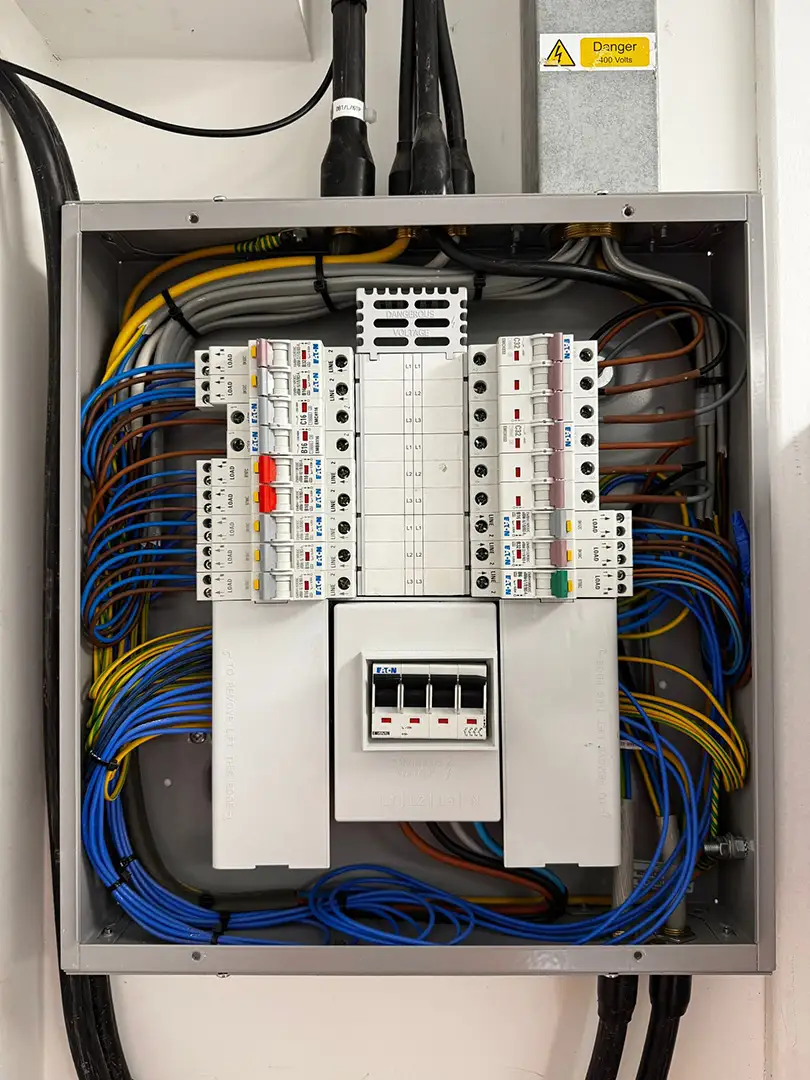
This also required a careful load balancing check to ensure the additional chargers wouldn’t overwhelm the main supply.
From the very first site visit, we approached the project with meticulous care. Nothing was rushed, and no assumption was left unverified.
Step 2. Applied the WCS Grant
Because we’re an OZEV-approved installer, we were able to manage the WCS grant process directly on the client’s behalf. Each of the two chargers qualified for a £350 subsidy, reducing their overall investment.
Clients often aren’t sure how the WCS process works, but that’s the benefit of working with an OZEV-registered company. We handled all the paperwork, ensured everything complied with the laws, and that we got the funding they’re entitled to.
Step 3. Selected the Right Commercial Chargers
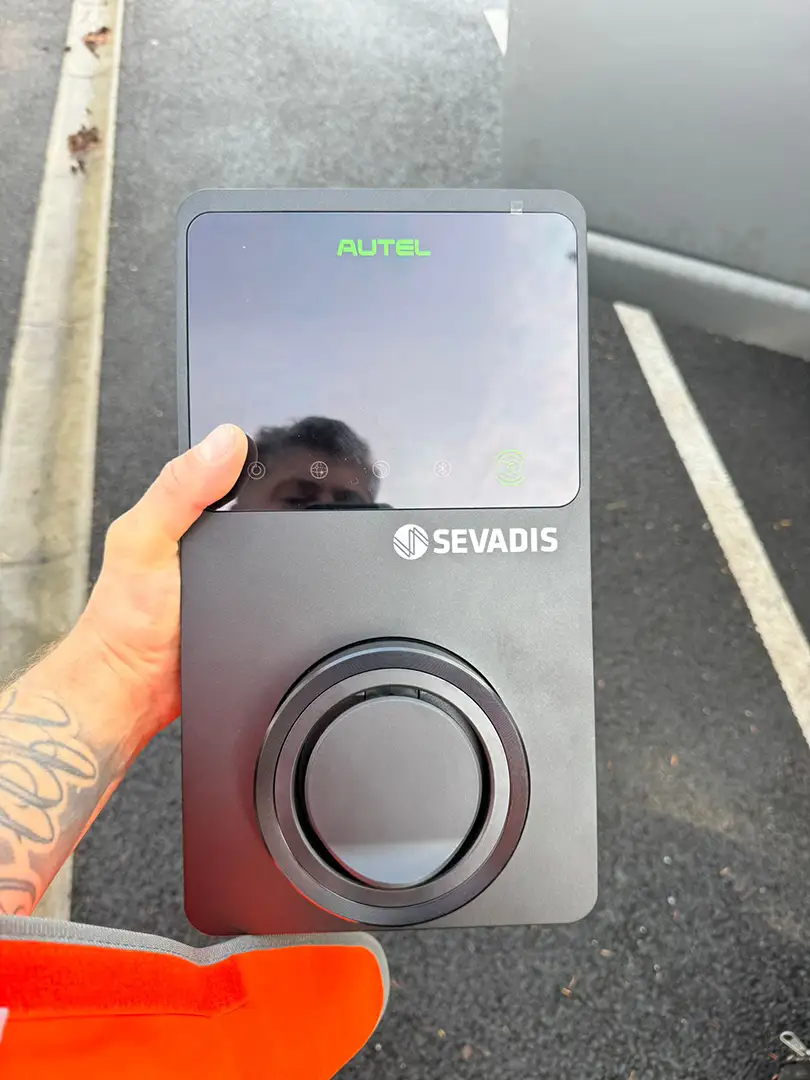
We installed two Sevadis MaxiCharger 22kW units, because of the following factors:
- High power output, suitable for quick top-ups during the workday
- Sturdy housing, perfect for commercial settings
- User-friendly interface for staff and visitors
These chargers were mounted using Sevadis root foundations, which provided a clean and secure base, helping to streamline the duct routing process underneath.
Step 4. Routed the Cables Underground for Safety
Rather than using surface-mounted cables, which can pose risks and compromise the site’s aesthetics, we employed a neatly routed underground duct system. This involved running the wires along the side of the building to a designated fuse board.
We coordinated with the groundworkers for trenching and duct placement and made sure every step complied with building codes and OZEV standards.
Most installers don’t consider this, but that’s where our team shines. There are no shortcuts or hazards, just clean and compliant execution.
Step 5. Final Testing and Handover
After installation, the chargers underwent full electrical testing and commissioning. We verified that each charger was delivering power correctly and that the load was balanced with the building’s system.
Everything was set up for future scalability, allowing us to add more chargers if needed in the future.
Outcome: A Satisfied Client and a Future-Ready Site
The client was thrilled with the result, not because the chargers worked, but because the process felt effortless from their end. We handled the survey, OZEV grant, enabling work, load assessments, and safety, all in one seamless operation.
Today, they have a workplace charging setup that supports their staff, meets regulations, and looks professional.
Why Choosing the Right Installer Matters
When it comes to commercial EV charger installation, the difference between a smooth rollout and an expensive rework often comes down to one key factor: who installs it.
OZEV Approval Isn’t Just a Badge – It’s a Benchmark
The UK’s Office of Zero Emission Vehicles (OZEV) approves only a select number of installers who meet strict criteria for safety, competence, and grant compliance.
Working with an OZEV-approved installer (like JME Energy) ensures your business qualifies for government incentives and all installation works comply with established safety standards.
Full Scope Service vs. Piecemeal Work
Many businesses fall into the trap of hiring multiple vendors for different stages: one for surveying, another for groundworks, and another for installation.
This increases the risk of miscommunication, timeline delays, and compliance gaps. That’s why hiring a full-scope provider is important, as they handle everything from planning to final commissioning. Such an arrangement eliminates coordination headaches and ensures a streamlined process.
What Businesses Should Consider Before Installing
Before you commit to installing EV chargers, ask these questions to make sure your business is future-proof and installation-ready:
1. Is the Building Ready for Future Expansion?
Even if you start with two chargers, will you want four, six, or even ten in the next five years?
Moreover, does your electrical infrastructure support scalability, and are ducts planned to avoid rework? These questions are crucial for ensuring a scalable and cost-effective EV charging setup in the long run.
2. Can Your Installer Handle Grants and Approvals?
Applying for WCS isn’t always straightforward. It requires accurate documentation, OZEV-compliant work, and post-install reporting.
Therefore, make sure that your installer is qualified to apply for grants on your behalf and assist you in claiming the full amount per charger.
At JME Energy, we make sure you receive every pound of funding for which you’re eligible.
Ready to Install EV Chargers Without the Headaches?
Before you proceed, make sure your installer is considering your future charging needs five steps ahead. It’s not just about getting chargers on the wall; it’s about getting the right infrastructure that scales with your business.
However, if you’re unsure of which company to contact, JME Energy is at your service.
As an OZEV-approved, UK-registered electrical firm, we take care of the whole process. Whether it’s duct routing, load balancing, or coordinating with ground workers, we do it with precision, safety, and professionalism.
Your time and resources are valuable.
Get in touch with our team today or call us at 07527 949 298 for one-on-one meetings.
FAQs
1. How long does a commercial EV charger installation take?
Most commercial EV charger installations take 1 to 3 days. It depends on the site’s complexity, the number of chargers, and the existing electrical infrastructure. Pre-installation surveys and planning may take additional time, but this ensures a smooth, compliant installation with minimal disruptions.
2. Will EV chargers increase my electricity bills significantly?
Electricity use will rise, but smart chargers with scheduling features can minimise cost by charging during off-peak hours. With proper energy management, costs stay controlled. Some businesses also offset usage by installing solar panels or applying for government incentives.
3. What’s the difference between AC and DC chargers for commercial use?
AC chargers (such as 22kW models) are slower and ideal for use in offices or workplaces. DC chargers offer rapid charging, but they are more expensive and require more power. The choice depends on your use case.


